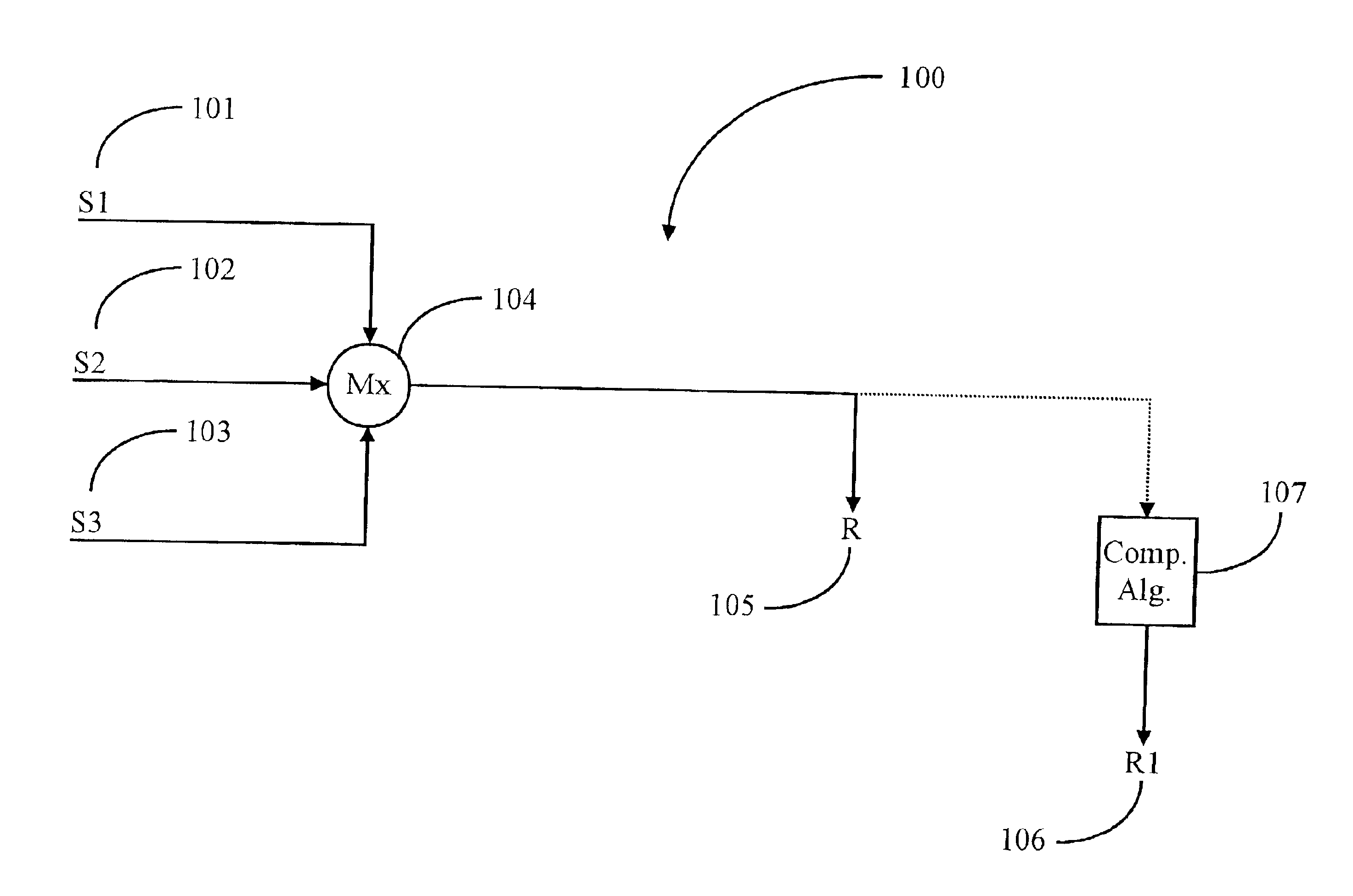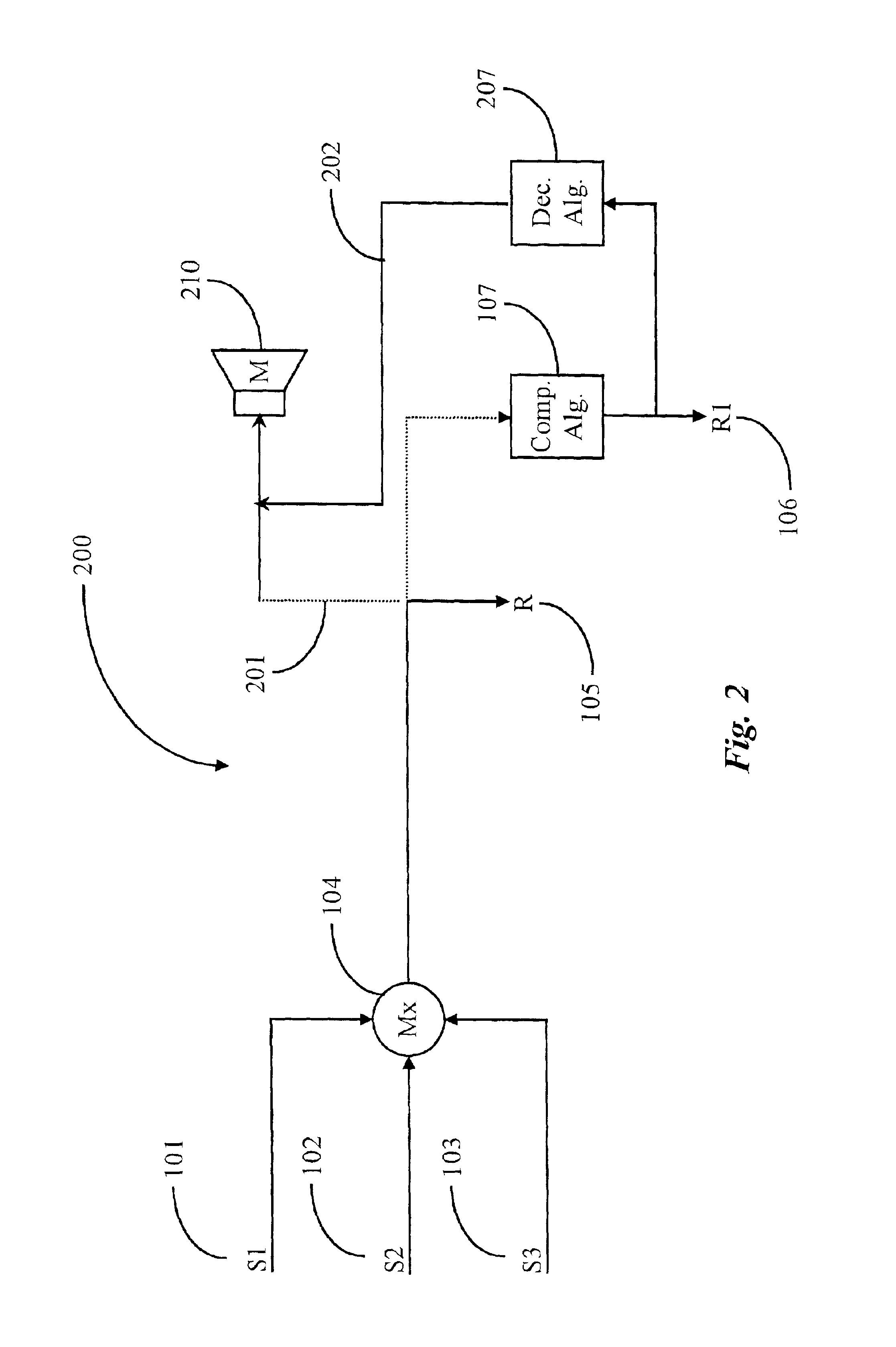Real-time monitoring system for codec-effect sampling during digital processing of a sound source
- Summary
- Abstract
- Description
- Claims
- Application Information
AI Technical Summary
Benefits of technology
Problems solved by technology
Method used
Image
Examples
Embodiment Construction
As previously described, a typical digital recording and mixing system consists of many separate functional units including an apparatus for changing signal strength and characteristics, signals incoming from usually more than one signal or sound source, a digital recording apparatus for processing and saving of digital signals, and an apparatus enabling playback of the digital recording.
FIG. 1 is a simplified block diagram of a typical recording and mixing system according to conventional art. For reasons of clarity and simplicity, elements of FIG. 1 are represented only by simple block characters without details of their specific operations. System 100 is shown in this example having a plurality of sound or signal inputs, typical of mixing and recording systems known in the art, represented as source S1101, source S2102, and source S3103. Signal sources such as described in a typical system are mixed in a signal mixing console such as mixer Mx 104 allowing the user to establish lo...
PUM
 Login to view more
Login to view more Abstract
Description
Claims
Application Information
 Login to view more
Login to view more - R&D Engineer
- R&D Manager
- IP Professional
- Industry Leading Data Capabilities
- Powerful AI technology
- Patent DNA Extraction
Browse by: Latest US Patents, China's latest patents, Technical Efficacy Thesaurus, Application Domain, Technology Topic.
© 2024 PatSnap. All rights reserved.Legal|Privacy policy|Modern Slavery Act Transparency Statement|Sitemap



